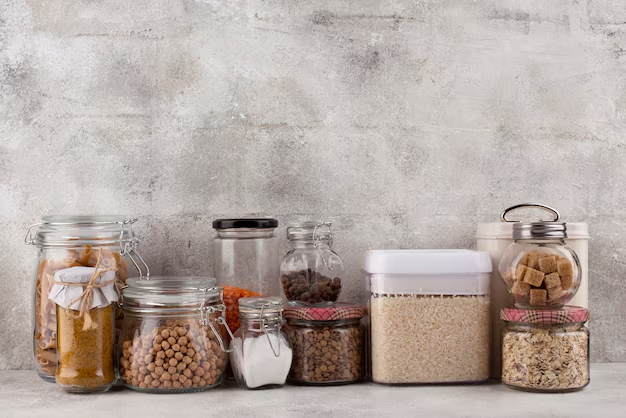How to Safely Store Cooked Oatmeal: Your Essential Guide
Cooked oatmeal, with its comforting warmth and nutritional benefits, is a breakfast staple for many. Have you ever cooked a bit too much and wondered, "How long does cooked oatmeal last in the refrigerator?" The safety and quality of oatmeal stored in the fridge depend on various factors. Let’s delve into storing cooked oatmeal effectively, helping ensure both its taste and nutrition remain intact.
🥣 The Basics of Cooked Oatmeal Storage
Oatmeal, made by cooking oats in water or milk, can provide a nourishing start to your day. However, like any food, it must be stored correctly to maintain its quality and safety.
- Cooling Quickly: Once cooked, oatmeal should be cooled rapidly to room temperature. This helps prevent bacterial growth commonly associated with leaving food at unsafe temperatures for prolonged periods.
- Proper Containers: Use airtight containers to store oatmeal in the refrigerator. This helps prevent the absorption of odors and minimizes exposure to air, keeping your oatmeal fresher.
- Refrigeration Timeframe: For optimal freshness and safety, it's commonly advised to consume cooked oatmeal stored in the refrigerator within 3-5 days.
Understanding Shelf Life: What Affects Cooked Oatmeal?
The longevity of oatmeal in your fridge can be affected by several factors, from how it's prepared to how it's stored:
1. Ingredients Matter
Oatmeal made with milk or dairy tends to spoil faster than oatmeal made with just water. Dairy products have a shorter shelf life and can encourage the growth of bacteria and mold.
2. Be Mindful of Add-Ins
Additions like fruits, nuts, or sweeteners in oatmeal can also influence its shelf life. Fresh fruits and moist ingredients may cause oatmeal to spoil more quickly.
3. Storage Conditions
Maintaining a consistent refrigerator temperature of 40°F (4°C) or below is crucial. Fluctuations in temperature can lead to rapid spoilage.
4. Quality Check
Trust your senses. If the oatmeal smells off, has an unusual texture, or appears discolored, it’s safer to discard it.
🔍 How to Tell If Oatmeal Has Gone Bad
Keeping an eye on any changes in appearance, smell, or texture is essential:
- Odor: Fresh oatmeal should smell mild and slightly sweet. Any sour or unpleasant odors are a tell-tale sign of spoilage.
- Texture: If the oatmeal has become slimy, it’s time to throw it away.
- Appearance: Discoloration or signs of mold are clear indicators that the oatmeal is no longer safe to consume.
Tips for Extending Oatmeal’s Shelf Life
To maximize the lifespan of your cooked oatmeal and keep it tasting fresh:
- Batch Cooking and Freezing: Consider dividing your oatmeal into portions and freezing. Oatmeal can be kept in the freezer for up to 3 months.
- Reheat Properly: When reheating refrigerated or frozen oatmeal, ensure it reaches an internal temperature of 165°F (74°C). This kills any bacteria that might have developed.
📝 Quick Storage Summary
Here's a handy table to help with storing your cooked oatmeal:
| Step/Tip | Detail | Emoji |
|---|---|---|
| Cool Quickly | Avoid bacteria growth by cooling fast. | ⏲️ |
| Use Airtight Containers | Keep oatmeal fresh by limiting air exposure. | 🥡 |
| Consume within 3-5 Days | Safe consumption period generally recommended. | 🚫 |
| Freezing Option | Extend life up to 3 months in the freezer. | ❄️ |
| Reheat to 165°F (74°C) | Ensure thorough heating before eating. | 🔥 |
Frequently Asked Questions
Can I Leave Cooked Oatmeal Out Overnight?
Leaving cooked oatmeal at room temperature overnight isn’t ideal. It may develop bacteria, making it unsafe to eat. Always refrigerate promptly after cooling.
Can I Eat Cooked Oatmeal Cold?
Yes, you can enjoy cooked oatmeal cold, especially if it's been well stored. It works wonderfully in dishes like overnight oats.
How Can I Make the Best Use of Leftover Oatmeal?
Transform leftovers into delightful dishes like oatmeal pancakes or use as a base for smoothies. The options are endless and can prevent waste.
Embracing Leftover Cuisine: Creative Uses for Cooked Oatmeal
Preventing food waste is becoming more crucial, and embracing the art of turning leftovers into new meals is rewarding. Here are a few innovative ideas:
- Oatmeal Pancakes: Blend cooked oatmeal with eggs and a dash of cinnamon for tasty pancakes.
- Smoothie Boost: Add a scoop to your morning smoothie for an extra filling boost.
- Baked Treats: Incorporate into muffin or bread batters for moist, chewy results.
Concluding Thoughts
Cooked oatmeal is not only a nutritious breakfast option but also versatile in its uses. Knowing how long cooked oatmeal lasts in the refrigerator and following best practices for storage is key to maximizing its longevity and safety. By understanding signs of spoilage and employing creative solutions for leftovers, you can enjoy your oatmeal confidently and economically.
Arming yourself with these tips ensures you enjoy every cozy bowl of oatmeal to its fullest potential—making it both a healthy and economical choice for your meals. Keep an eye on those best-by signs, experiment with different storage techniques, and make innovative use of leftovers for continued culinary delight!
